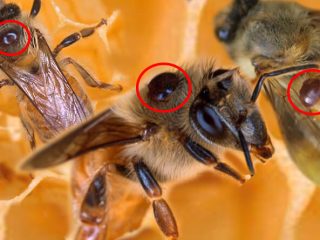Content
Stimovit for bees, according to the instructions for use, is not a drug. The dietary supplement is used as a supplement to prevent the spread of infectious diseases in the bee family.
Application in beekeeping
Bees, like any representatives of the animal world, suffer from viral diseases. Harmful pollutants in the air and fertilizers used by humans negatively affect the health of these beneficial insects. Stimovit increases the resistance of bees to negative environmental factors.
A deficiency of protein foods (breadbread, honey) causes protein dystrophy in insects, which leads to weakening of individuals and leads to ineffective beekeeping.
Composition, release form
Stimovit powder is grayish or brownish in color and has a fairly strong garlic aroma. The vitamin complex in the drug is perfectly balanced. Amino acids and minerals enrich the diet of bees.
A 40 g package is designed for 8 treatments. Beebread (pollen) is taken as the main component of Stimovit for bees. Garlic extract is used as an antibacterial and antimicrobial agent. Glucose stimulates the vital activity of insects.
Pharmacological properties
Stimovit is used as an additive when feeding bees. The drug improves the protective functions of the insect body, helping to fight infection of viral or invasive origin.
Beekeepers use Stimovit for the treatment and prevention of diseases:
- Kashmir virus;
- sacbrood virus;
- chronic or acute form of wing paralysis;
- cytobacteriosis;
- black mother liquor.
Thanks to its vitamin content, Stimovit acts as a stimulant on bees. Insect activity is increasing. The growth of bee colonies occurs faster and the quality of the product produced increases.
The product is used to prevent the weakening of bee colonies during periods of insufficient accumulation of bee bread.
Stimovit: instructions for use
The drug is recommended to be used 2 times per season during periods of family growth when there is a lack of natural food in late spring and early autumn. The optimal period for the first feeding is from April to May, and from August to September for the second time.
To feed bees, Stimovit should be added to sugar syrup. The powder dissolves at temperatures from 30 to 45 oC. Therefore, the syrup should be brought to the recommended state.
Dosage, rules of use
To improve the quality of feeding bees, add 5 g of Stimovit powder to the syrup for every half liter of sweet liquid.
During spring feeding, the mixture is poured into the upper feeders at the rate of 500 g per family. Experts recommend feeding bees 3 times with an interval of no more than 3 days.
Autumn feeding is carried out after pumping out the honey. The volume of syrup enhanced by Stimovit per family of bees is up to 2 liters.
Side effects, contraindications, restrictions on use
Due to the natural origin of the components of Stimovit, the drug has no contraindications.
Experiments conducted by specialists did not reveal any side effects when using the supplement.
For weakened families, feeding should be done in reduced doses.
Shelf life and storage conditions
Stimovit is stored in a dark place away from heat sources.
The shelf life when sealed is 24 months from the date of issue.
Conclusion
The instructions for Stimovit for bees contain information about the absolute harmlessness of the drug for humans. Honey from an apiary where fertilizing with a biologically active additive was used is used as food without restrictions.









